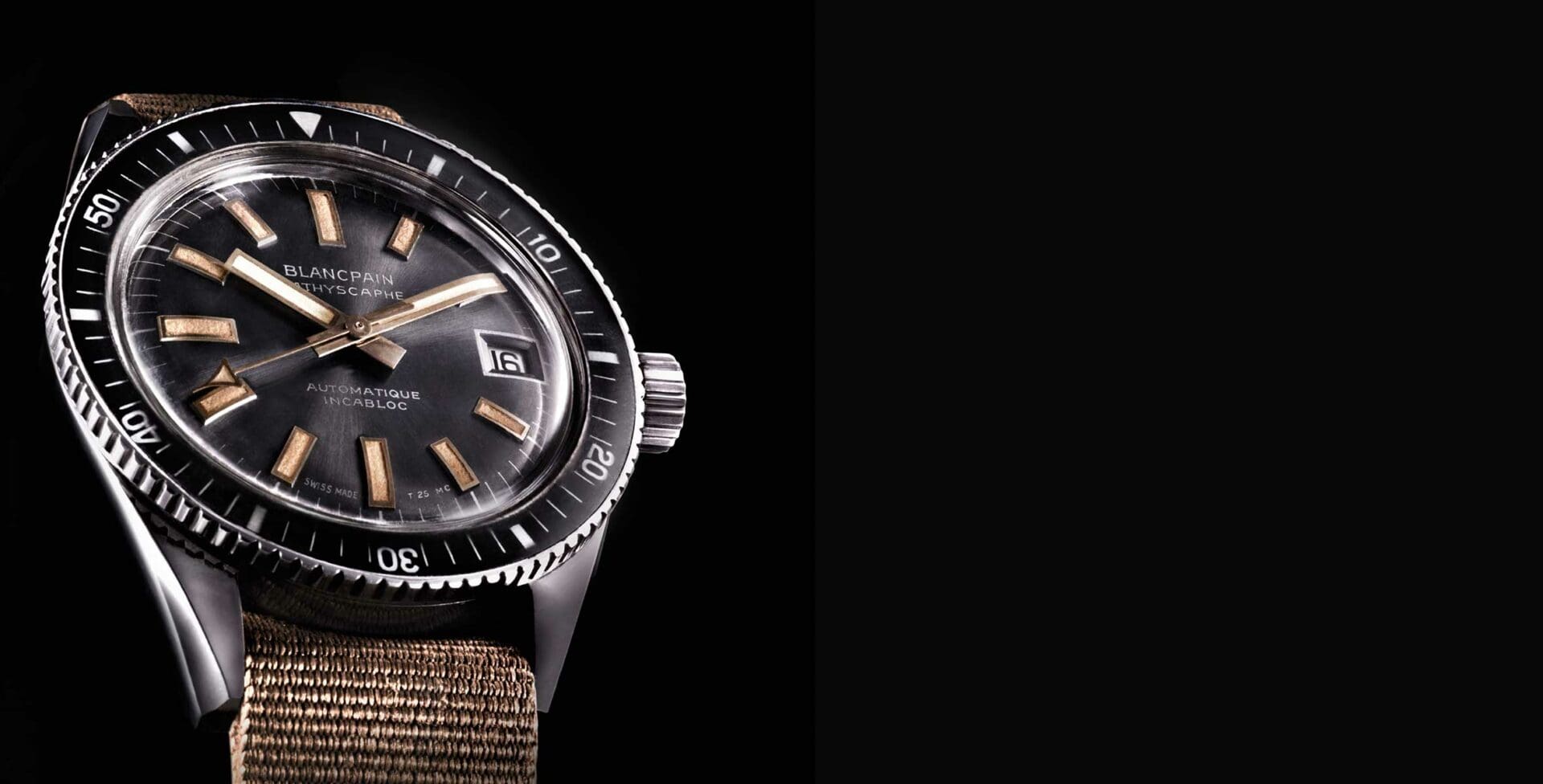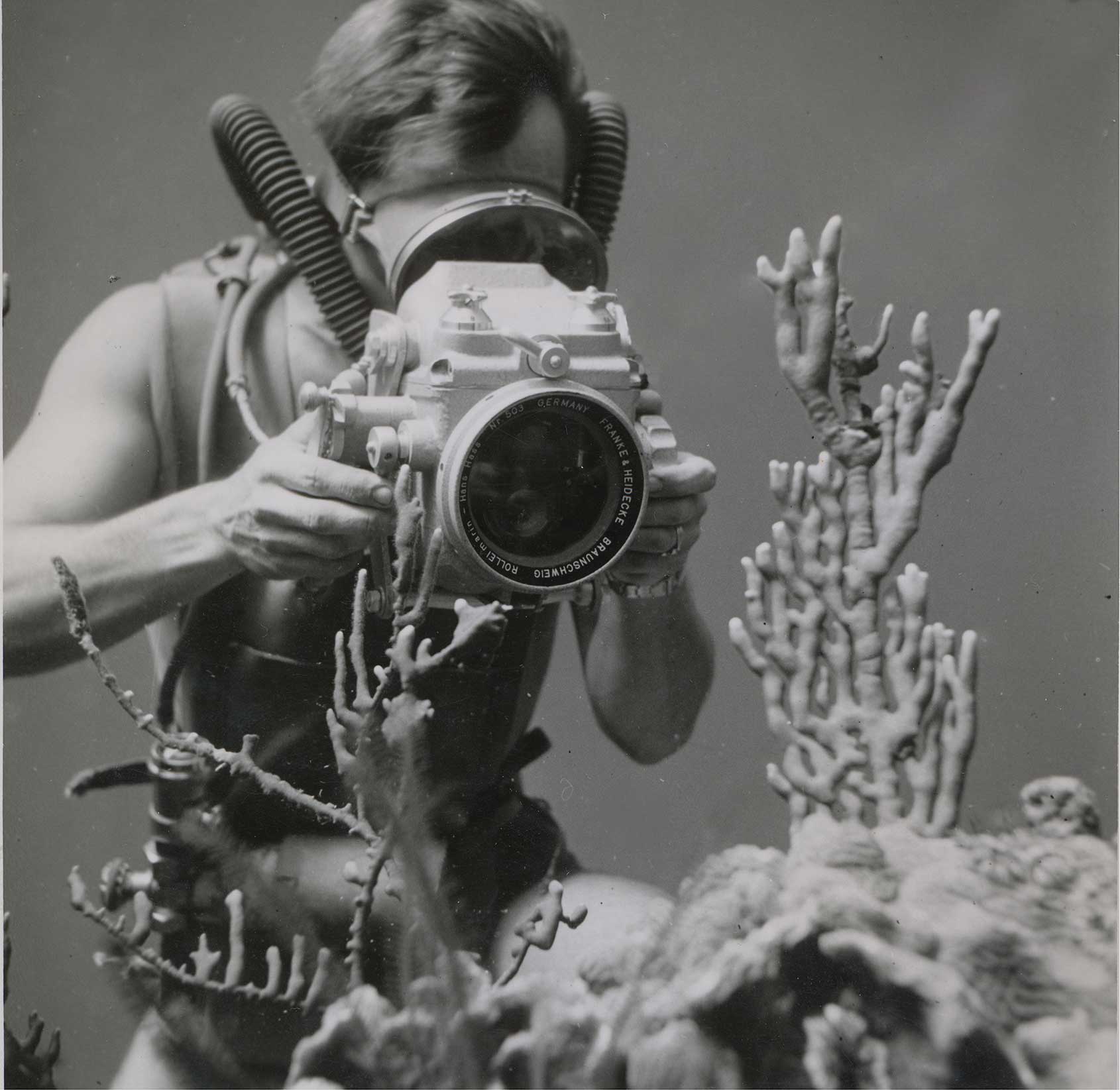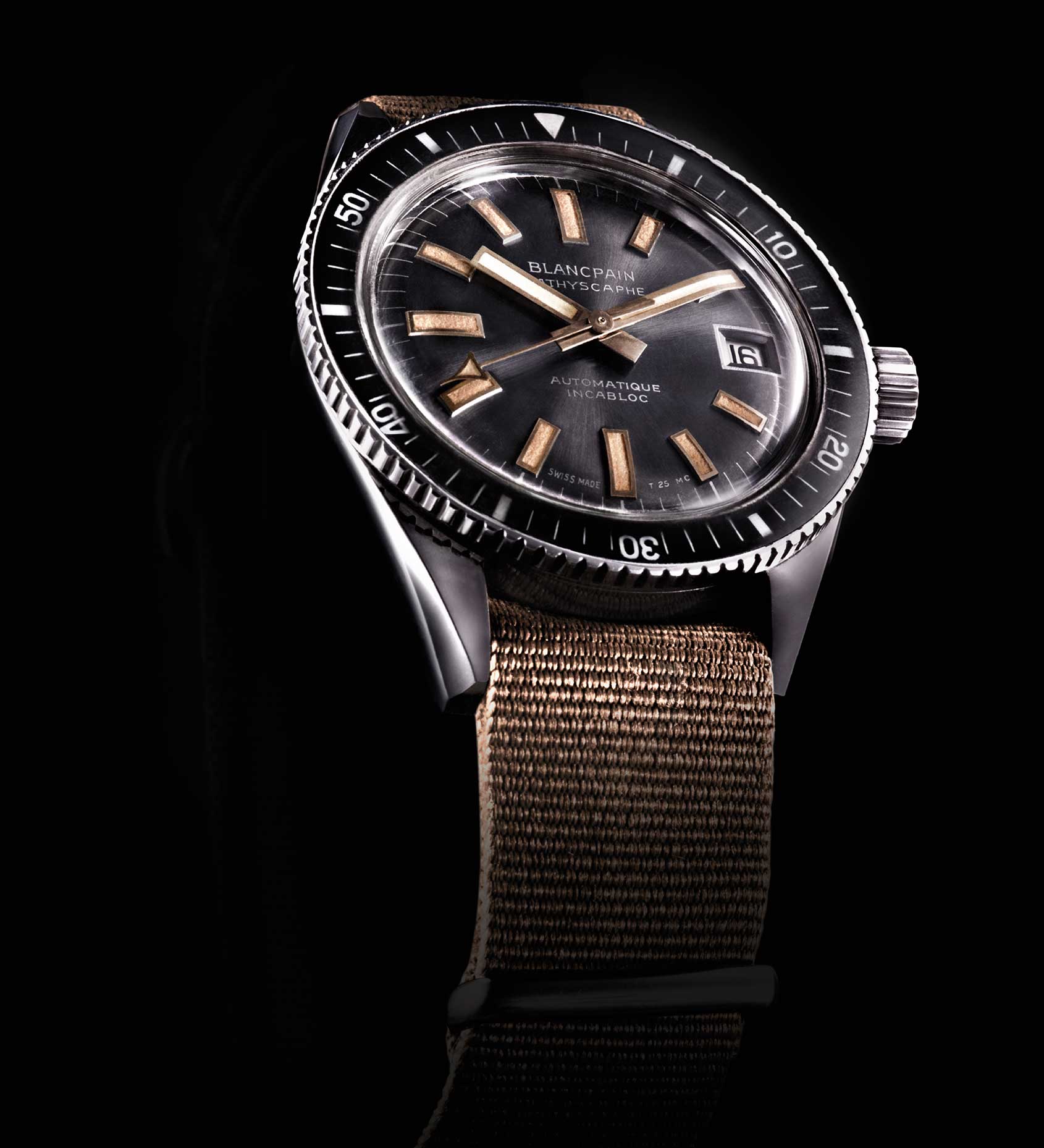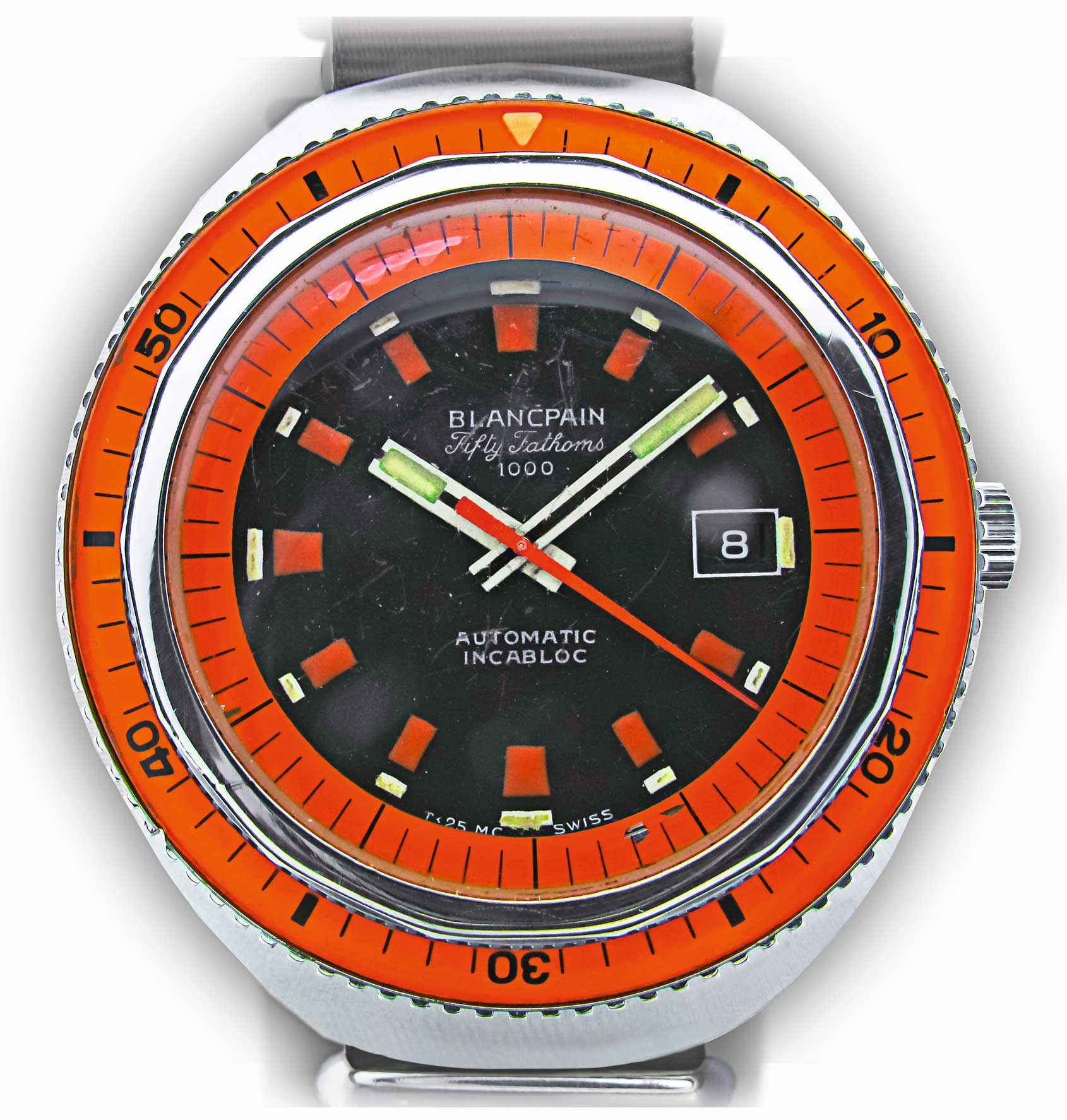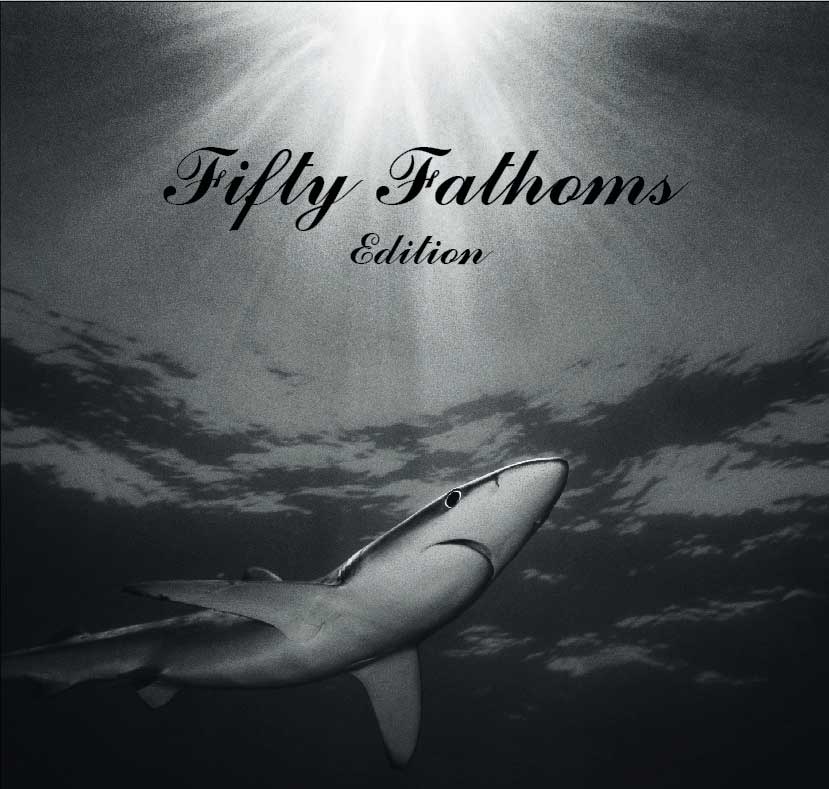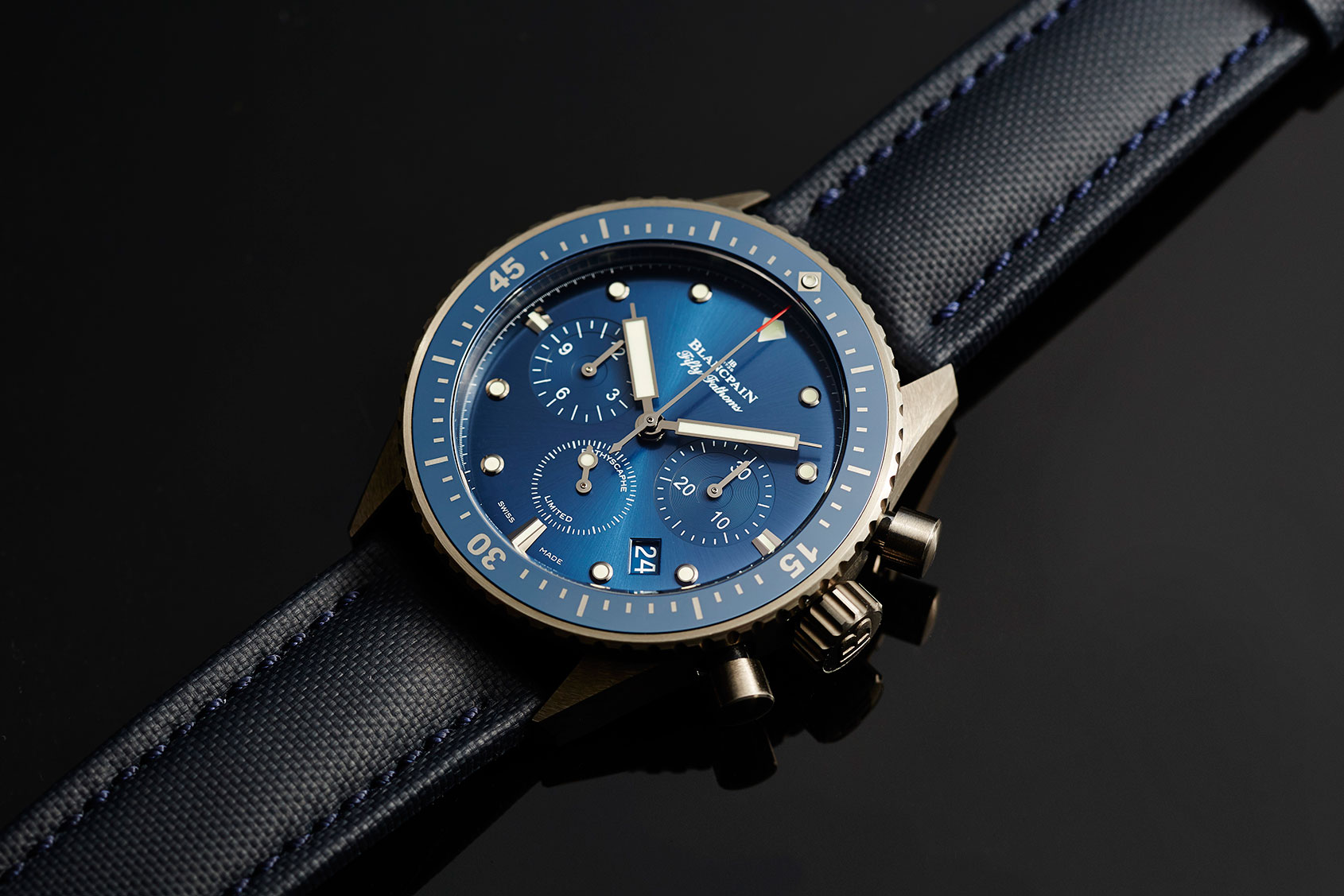INSIGHT: The History of Blancpain’s Ocean Commitment
Dietmar FuchsEditor’s Note: In the middle of last century, the exploration of the ocean’s hidden depths became possible due to two key developments: reliable underwater breathing apparatus and effectively watertight watches. In a special story, Dietmar Fuchs, Editor of Blancpain’s annual Edition Fifty Fathoms, discusses how the availability of these technologies led to a rise in popularity of the underwater world and consequently to our awareness of the need to preserve it.
The predawn era
Many people associate the birth of sport diving with the explorer, filmmaker and scientist Jacques Yves Cousteau and his famous AquaLung, but nine years before Costeau’s The Silent World Austrian scientist Hans Hass had already conquered the depths using modified military gear – his first film, Humans and Sharks, premiered in 1947. Through books, cinema and television Hass showed the world the beauty and importance of the oceans.
1953

An important year in the history of sport diving, 1953 saw Swiss watch manufacturer and CEO of Blancpain Jean-Jacques Fiechter develop the first modern diving watch with French combat diver Captain Robert Maloubier. Not only did they construct a watertight and pressure-resistant watch case, they also invented the dive bezel lock in the form of the the unidirectional dive bezel – innovations that defined the modern, safe dive watch. For this reason, the Fifty Fathoms is regarded as the first modern diving watch, with its development triggering a flood of interest in recreational diving.
The 1950s

While Fiechter and Maloubier were busy working on the Fifty Fathoms, Hans Hass focused on his own challenge, creating the world’s first underwater camera. The RolleiMarine’s release was soon followed by a veritable fleet of film and television cameras, capturing life on the seabed. After all, if the commercial availability of Cousteau’s Aqualung breathing apparatus made diving possible, and the Fifty Fathoms made it safe, it was the underwater camera housing that made it possible to share its beauty.
Ocean lovers didn’t have to wait long to get the first television series about a diver broadcasted into their homes, SeaHunt, featuring Lloyd Bridges. Not long after came dedicated dive watch advertising, and again the Blancpain Fifty Fathoms lead the pack.
The 1960s
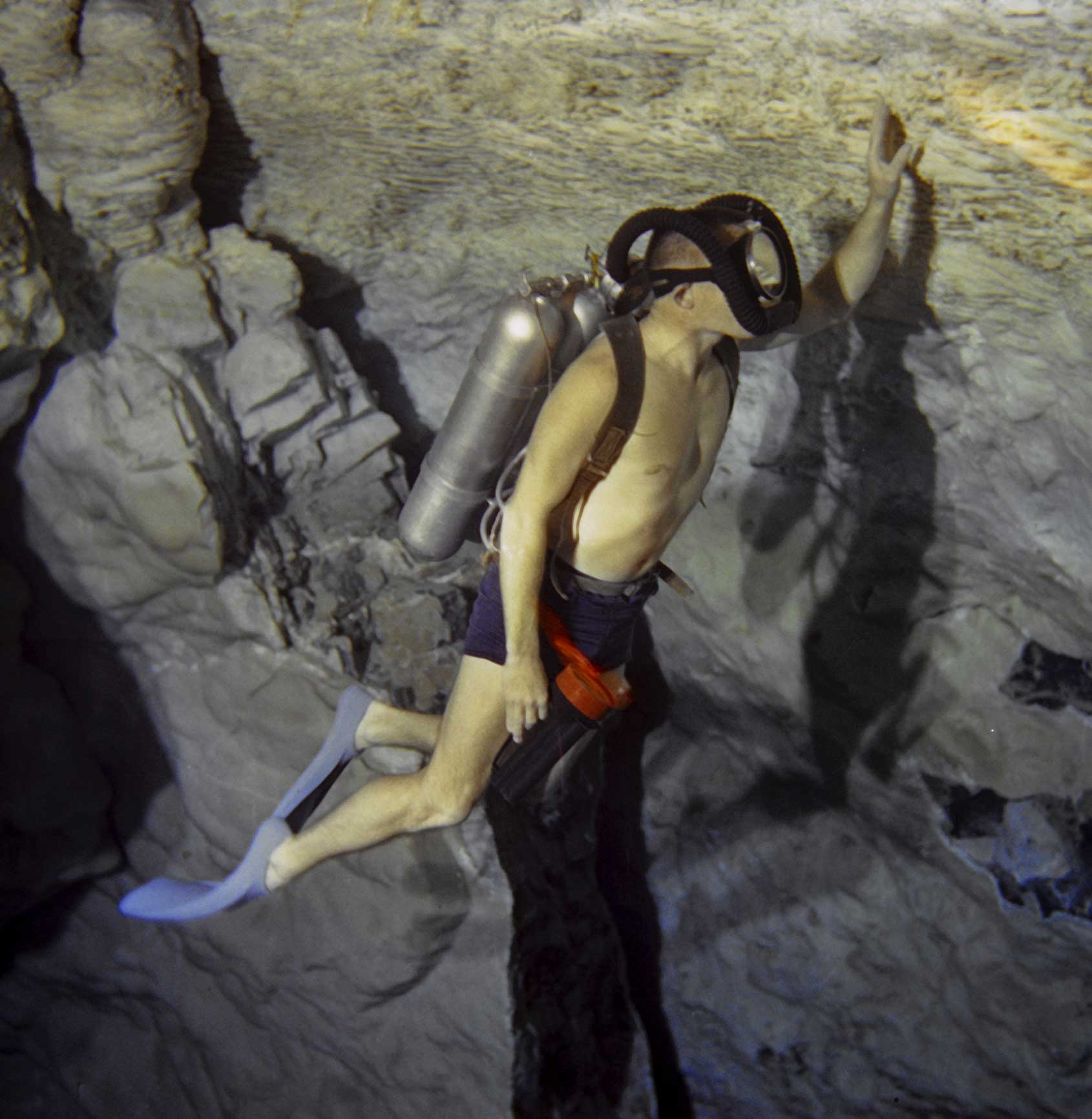
The 1960s saw an increasing focus on the importance of a scientific exploration of the ocean. Ernie Brooks took a particularly hands-on approach as possibly the first photographer to finance marine research. He’s well known for having discovered the largest underground river in the continental USA and, though he’s most famous for his black and white work, he was also one of the first to use colour film underwater. Age has done nothing to slow Brooks down. Today, at the age of 88, he is still exploring the marine world with his Hasselblad.
This was also the age of the first Bathyscaph, smaller and simpler than the mil-spec Fifty Fathoms, and a perfect watch for the growing civilian market.
The 1970s
As sport diving started pushing the limits, the American dive pioneer Bob Hollis introduced an ambient pressure chamber, allowing divers to stay at greater depths for longer times. Watches were developing too. Blancpain released the first marketable dive watch with a case rated to 1000m. Meanwhile, orange became the new colour for dive watches – and not just because it’s funky. Orange is very visible at depth.
The 1980s
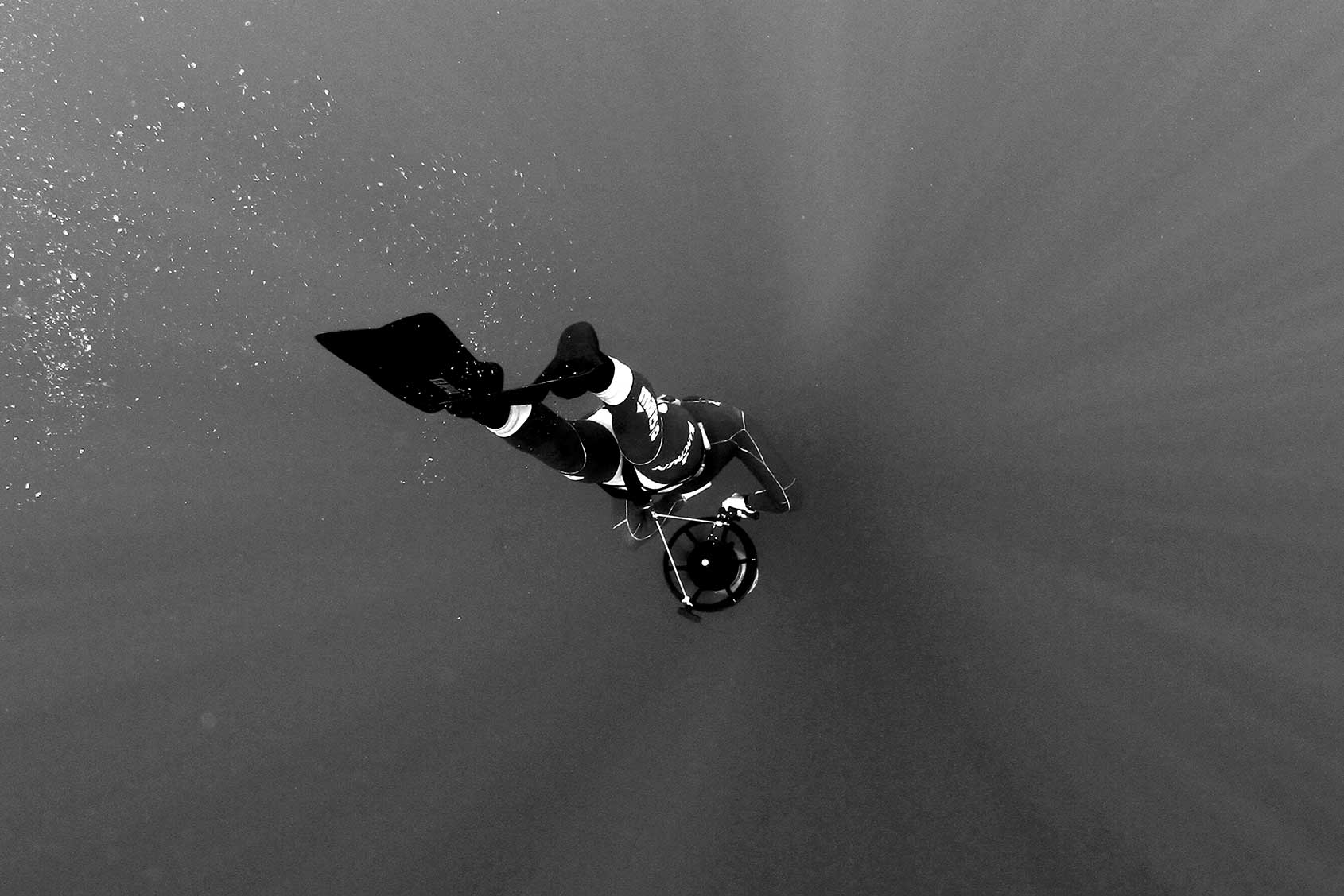
Sport diving began to fragment. Mainstream divers continued to explore increasingly exotic locales, but alongside them free diving was growing in popularity. With a single breath, these adventurers reached first 50, then 100 meters of depth, and went deeper and deeper. The current no-limits world record holder is Herbert Nitsch with a depth of 214m set on June 14, 2007, in Spetses, Greece.
The 1990s
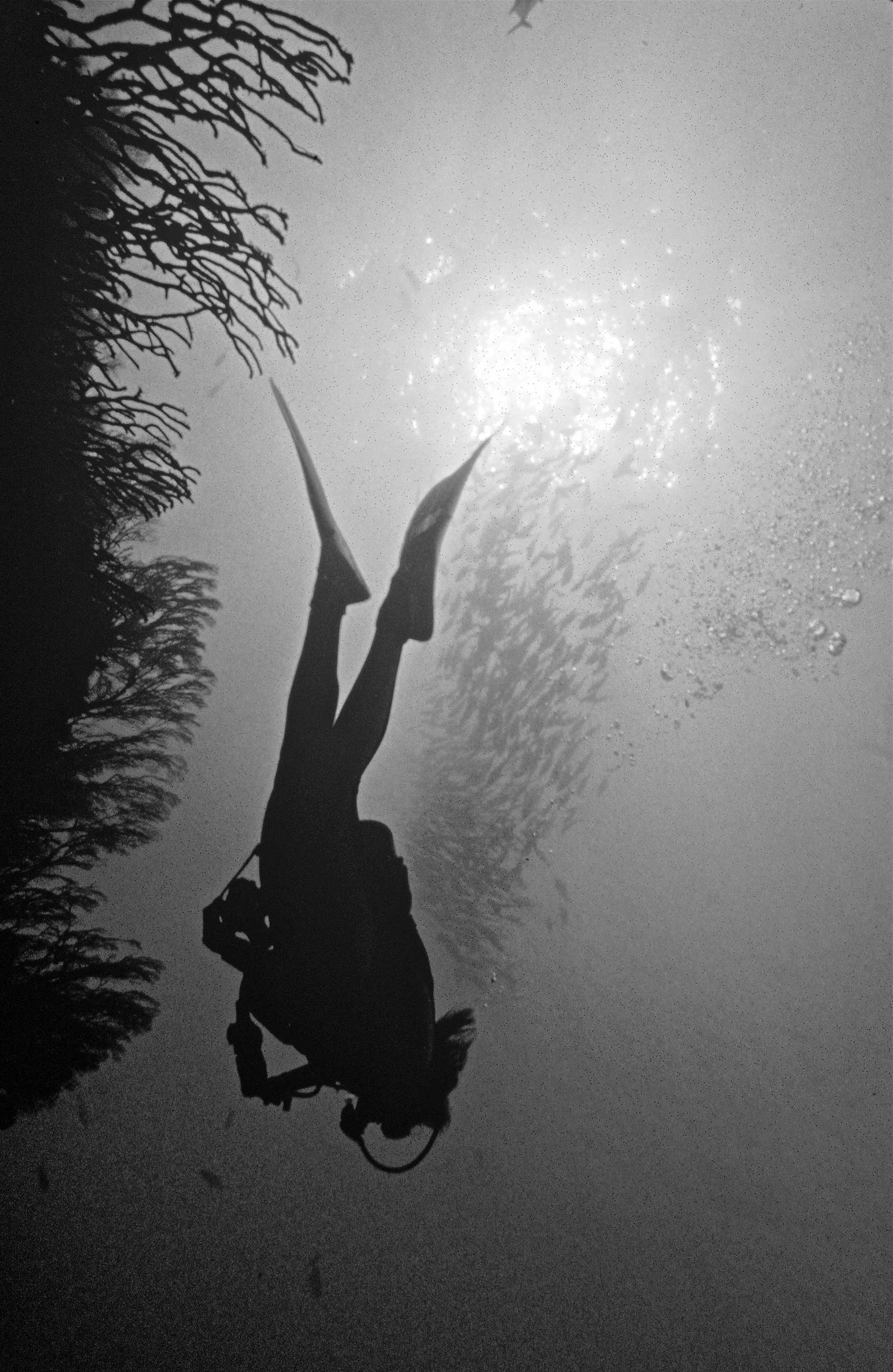
Sport diving hit the mainstream. And now that everyone could do it, the adventurers had to find new boundaries to push. American diver Bret Gilliam set a new record diving with air, reaching 452 feet. The other major innovation was dive computers, a real challenge to traditional dive watches.
2003
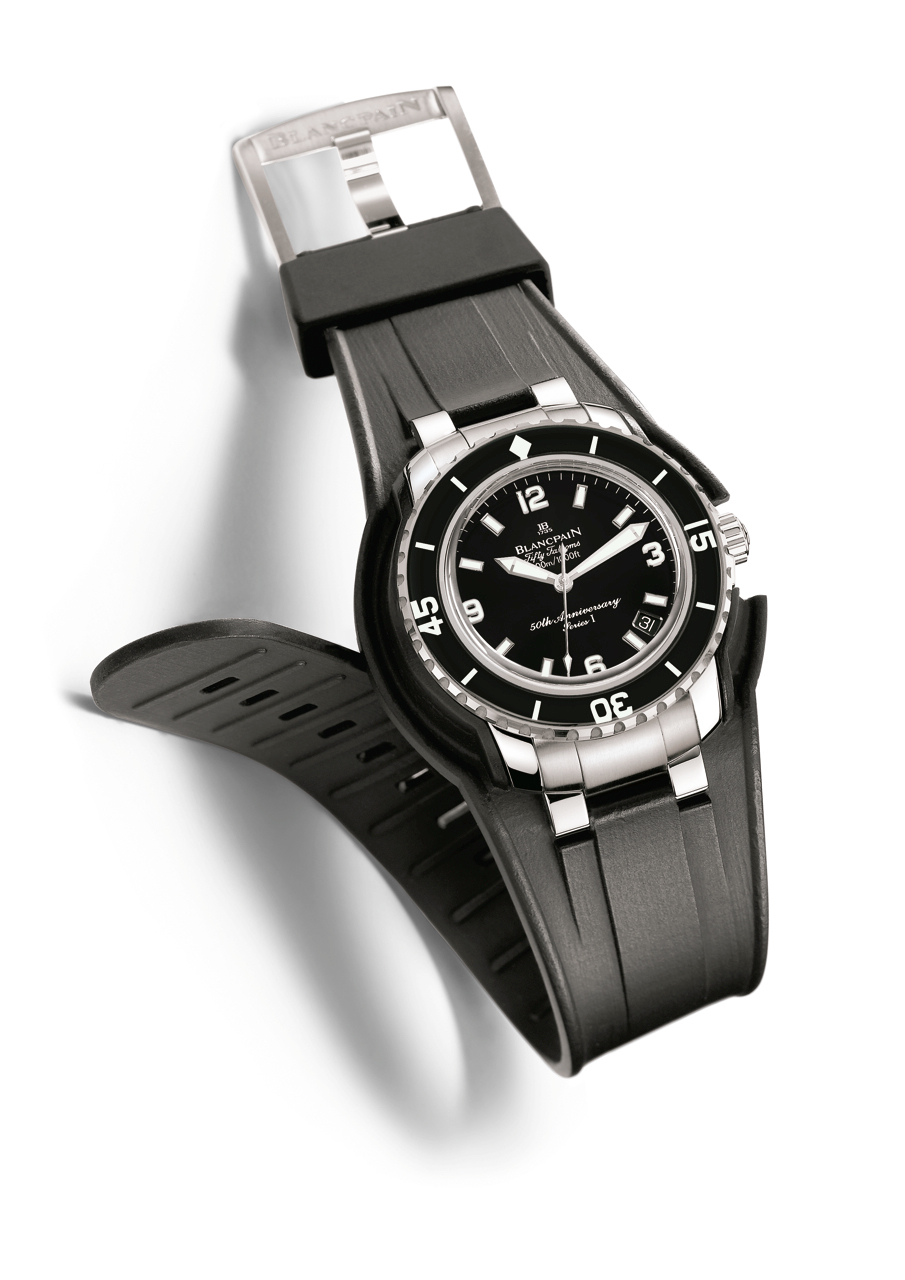
Blancpain got a new CEO, Marc A. Hayek, who also happened to be an avid diver and underwater photographer, so it was no surprise that he quickly reinvented the Fifty Fathoms. The new version was luxurious, but still a credible diving tool, and Hayek presented the first one to Robert Maloubier 50 feet down in the Similan Seas off the coast of Thailand. The Fifty Fathoms was back.
2007
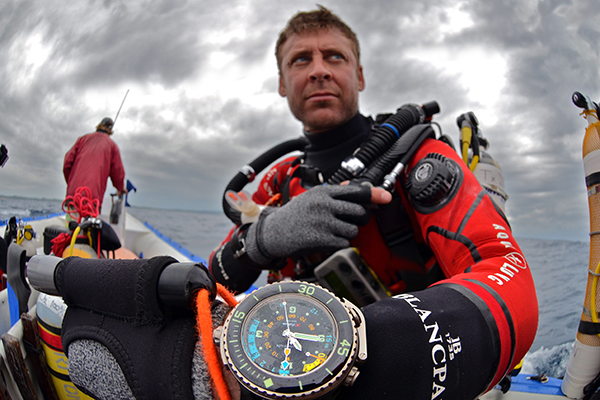
Hans Hass was the first to combine science, photography and film to explore the unknown depths of the ocean, and in 2007 Laurent Ballesta followed in his steps, taking the deepest underwater picture ever captured by a diver. In 2013, he was awarded the Hans Hass award honouring his scientific exploration and award-winning photographs and films. Today Blancpain partners with Ballesta Expeditions, and it was Ballesta who tested the mighty X Fathoms – the first diving watch including a membrane depth gauge split into two different depth ratios for deep diving and for decompression.
2008
Blancpain started collecting the most beautiful, rare and important examples of underwater photography and invited some of the most famous marine photographers to be involved. This exclusive circle of 50 individuals became known as the Fifty Fathoms photographers and their artistic work was brought together in the Edition Fifty Fathoms, 12 books (to be published from 2008 until 2020) featuring 50 outstanding pictures each year. The first Edition featured Ernest Brooks, Maurine Shimlock, Udo Kefrig and Helmut Horn – four professionals who have dedicated their life to the art of underwater photography.
2009
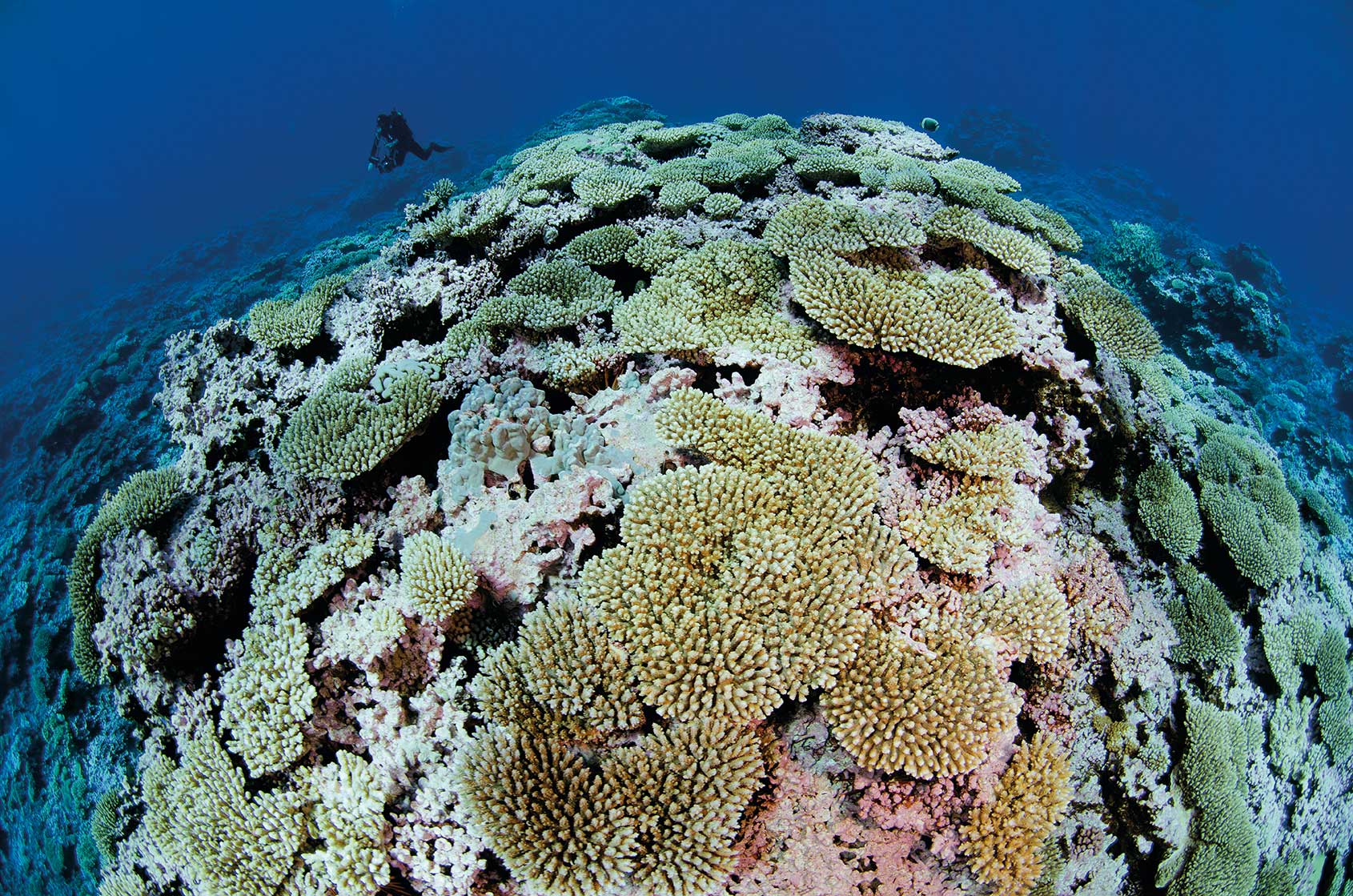
Blancpain and the National Geographic Society joined forces to start the Pristine Sea Expedition led by Spanish explorer and scientist Dr Enric Sala. The Pristine Seas expedition is not just about discussing the preservation of our ocean or complaining about the neglect many countries show. The aim is to encourage countries to take measures to protect their waters and as a result, today the Pristine Seas established sanctuaries cover an area of 3,000,000 square miles.
2014 Blancpain Ocean Commitment
Marc Hayek founded the Blancpain Ocean Commitment to combine all the ocean related efforts and activities of his company, coinciding with the release of a book dedicated to the history of the first diving watch and sport diving from 1953 till 2013. What better way to celebrate the Fifty Fathoms’ 60th anniversary – while also looking forward to the future of diving and the ongoing conservation of the oceans that surround us.




